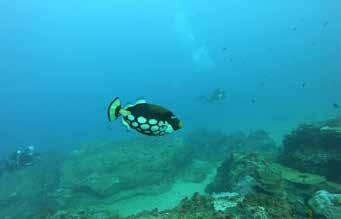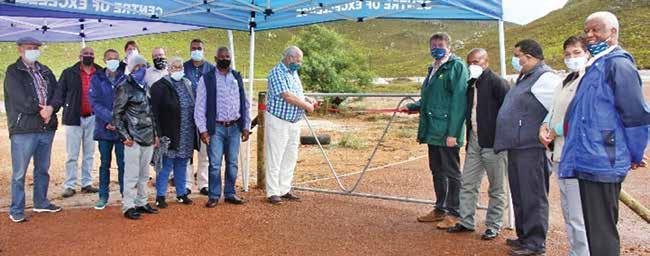
2 minute read
Diving into Sodwana Bay
Diving into Sodwana Bay
By Jax Bath
Advertisement
Long before I ever thought I’d enjoy breathing under water, I’d heard that if it’s something you’d like to try, go and do it at Sodwana Bay. Sodwana is a scuba mecca, hosting over 30 000 divers a year (pre-Covid at least) and home to over 1 000 fish species.
Sodwana Bay boasts a system of tropical reefs whose names were given in relation to their distance from the launch site. The reefs are believed to be thousands of years old and are the southern-most coral reefs in Africa. With just under 100 species of coral living on the remains of olden sand dunes, some dives here are considered to be amongst the best in the world.
I was lucky to do three dives in Sodwana, two on the two-mile reef at Coral Gardens and one dive at the five-mile reef on a dive site called Ribbon. The water was crystal clear on all three dives and we were lucky to have little to no current, which makes for a much easier dive.
My first dive at Coral Gardens saw us drop into the water just above the home of a Two-bar Clownfish family. After descending to the deep, this was the most welcome surprise.
Clownfish are famed for making their homes in anemones, immune to their stinging tentacles. The Clownfish find protection here, but they also protect and help nourish their home. Sometimes they even see us divers as a threat, as was the case with one particularly brave fish which came over to ward me off. I heeded his warning, finning off to ensure that Nemo’s cousin could relax once again and carry on with its day.
As one breathes rhythmically through a scuba regulator, there are moments of silence, and in these moments the true nature of the reef is revealed. As I finned away from the Clownfish, I slowed my breath and heard the incredible crackling of the reef. The sound is created by the thousands of fish and other creatures living in these under-water cities, and it’s one of my favourite aspects of a dive.
The sea is sometimes described as a silent world, but it’s alive with song and sound. One of the fish caught up in the hustle and bustle is the Emperor Parrot Fish. They have incredible bite force and are believed to have some of the strongest teeth in the world – something that’s easy to believe when you hear them chomp down on a reef! They feed on the skeletons and polyps of corals and once feeding is done, excrete sand. It is believed that larger members of this group can add over 400kg of sand to our oceans a year, so we have them to thank for the beautiful tropical beaches we find ourselves enjoying when we take a holiday in places like Sodwana.
Click on the newspaper below to read more (see page 19).










